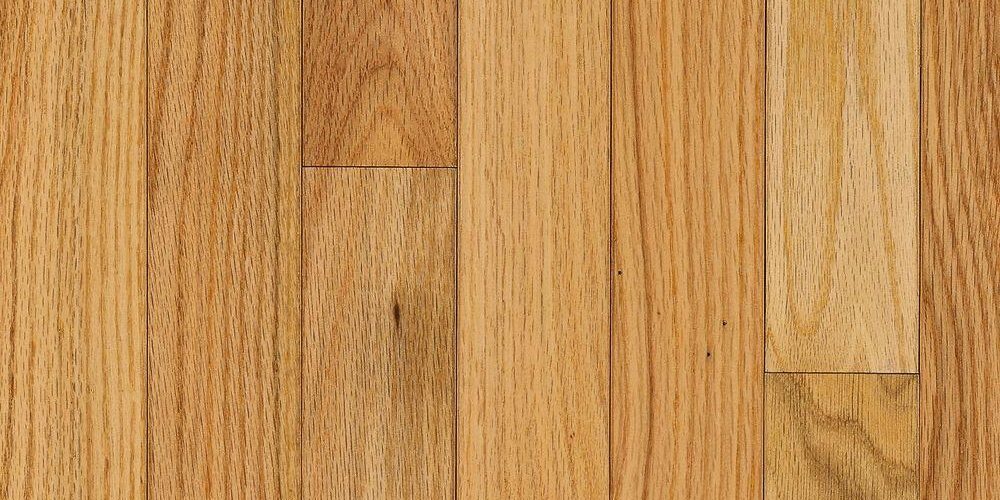Solid oak flooring makes an excellent choice for new home construction or for flooring replacement projects in a remodeling project. It not only adds unsurpassed beauty to any home, but it is the only flooring choice that can add significant value to a home. When choosing solid oak wood flooring for the home, consumers must consider the grade and width of flooring that they wish to install, the preferred choices for the installation process, and how all of this will fit into their budget.
Solid oak floors basically have seven grades of quality level. The various grades will have an impact on the price. The lowest grade is the barn or tavern grade of flooring. It offers a rustic feel when installed. It is good for public places. It has visible knots, cracks, and fissures. The boards are often wider than standard width. The next grade after the barn grade is the character grade. As the terminology would imply, the wood has visible character marks that is provided from cracks, knots, and fissures in the wood grain. Select grade is the first of the finer grades of solid oak hardwood flooring. The blemishes are at a minimum. At just a slightly improved quality level is the classic or better grade flooring. Distressed flooring is a well cut piece of flooring, but it is purposely aged and antiqued.
This artificial aging and antiquing is done for a cosmetic appearance. Prime grade is the finest of the plain saw boards. These boards contain no knots or fissures. The flooring will contain little or no discoloration differences in the floor boards. Quarter sawn or clear grade is the most desirable and expensive of all of the solid red oak flooring. It is made from selected lumber. It is physically the strongest of all the various oak boards. The names of these grades could vary slightly between flooring companies. The different levels of grades will be prevalent in both unfinished and finished flooring.
The standard thickness of solid oak flooring is ¾” thick. This allows for a 5/16” top layer for refinishing. The oak flooring can be refinished an average of seven times. The standard width of solid white oak flooring is 2 1/4”. Manufacturers may produce oak boards ranging from three to six inches in width. A consumer can request custom flooring that can be wider than six inches or narrower than two and one-fourth inches. The narrow boards give a more elegant look to the home, and the wider floor boards add a more relaxed, country atmosphere to the home. The flooring is shipped in varying lengths. The lengths range from twelve inches to eighty-four inches. Custom cuts can range up to twelve feet in length. Widths and lengths of the flooring may affect the price, and custom flooring comes with a higher price.
Once the preferred look for the solid oak parquet flooring has been chosen, the consumer will have some decisions concerning the installation of the the flooring. There is various types of oak flooring. The two most common types are red oak and white oak. The homeowner must choose between finished flooring and unfinished flooring. Although finished flooring may be more expensive, it is an easier installation choice. Once the flooring is installed, the project is completed.
If unfinished flooring is chosen for the project, the flooring must go through the various steps of finishing the flooring. This delays the completion of the project, and the choice has the potential for unforeseen complications to arise. Finished flooring also has the advantage of a factory finishing job. This will insure a more uniformed finish, and some companies provide up to a fifty year warranty on their finished flooring.
Before any project gets truly underway, a budget must be established. Prices on oak flooring can vary. The grade of the chosen board can influence the price. The width of the flooring piece has an impact on the pricing. Unfinished solid oak flooring can range from just under two dollars to over four dollars for standard grade and standard thickness. The same grade and thickness in finished oak flooring generally ranges from four dollars to over five dollars. Higher grade flooring will naturally be higher in price. Prices also vary between different manufacturing companies.
The less reputable companies often appear to have lower prices. Although this can be tempting, the lesser known companies often have poorer quality merchandise, and they often do not warranty their product as well.
Hardwood floors add value and beauty to any home. With a budget established, homeowners are ready to decide on the type of solid oak flooring, plan the installation process, and decide on if finished or unfinished flooring will be the best choice for the project.
Related Posts
<>



